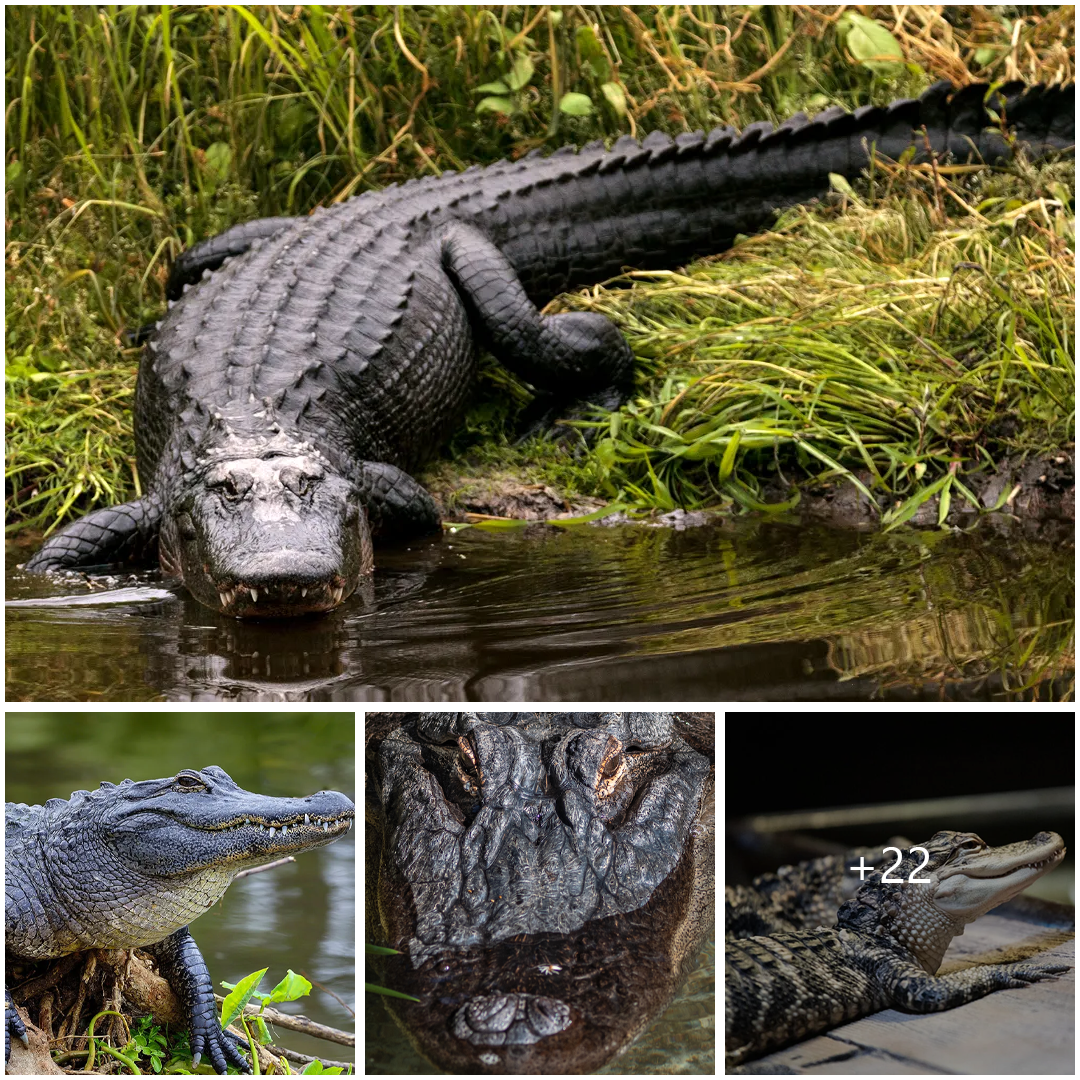
Both males and females reach sexual maturity when they are about 6 feet (1.8 meters) long, a length attained at about 10 to 12 years. Breeding takes place during the night in shallow waters. Males (bulls) roar to attract females and to ward off other males. The male circles the female and mounts. Courtship starts in April, with mating usually occurring in early May.
After mating has taken place, the female builds a nest of vegetation. The nest can measure seven to 10 feet (2.1 to 3 meters) in diameter and two to three feet (0.6 to 0.9 meters) high. Then, around late June and early July, the female lays 35 to 50 eggs. Some females can lay up to 90 eggs. The eggs are then covered with vegetation and hatch after a 65-day incubation period. The sex of the juveniles is determined by the temperature of the nest. Temperatures of 31? C (87.8? F) or below produce females. A temperature of 32? C (89.6? F) produces 75 percent males and 32.5? C (90.5? F) and above are mostly females. Alligator nests are sometimes used by other reptiles for their own egg deposition and incubation.
Toward the end of August, the young alligators begin to make high-pitched noises from inside of the egg. This lets the mother know that it is time to remove the nesting material. When the baby alligator hatches it measures about 6 to 8 inches (15 to 20 centimeters). Newly hatched alligators live in small groups, called “pods.” Some 80 percent of young alligators fall victim to predators such as birds, raccoons, bobcats, otters, snakes, large bass and larger alligators. Females aggressively defend their young during these first few years. Crocodilians are one of the only orders of reptiles that offer maternal care to their young. The juveniles grow about a foot a year.





